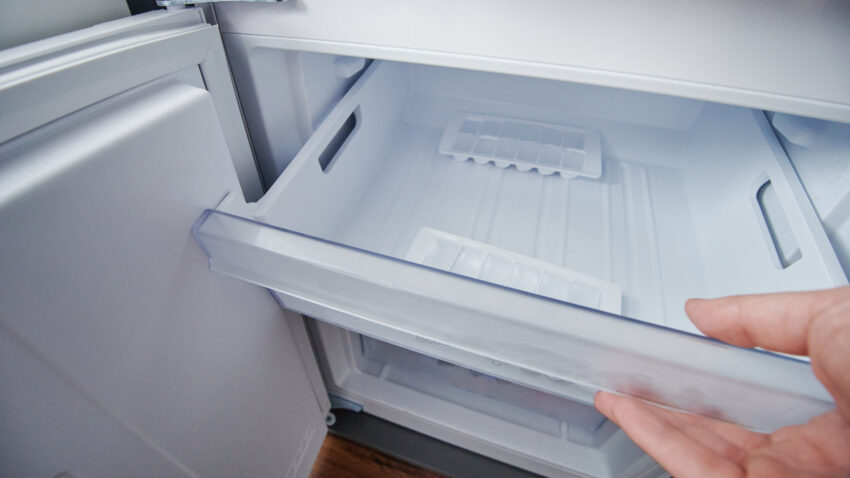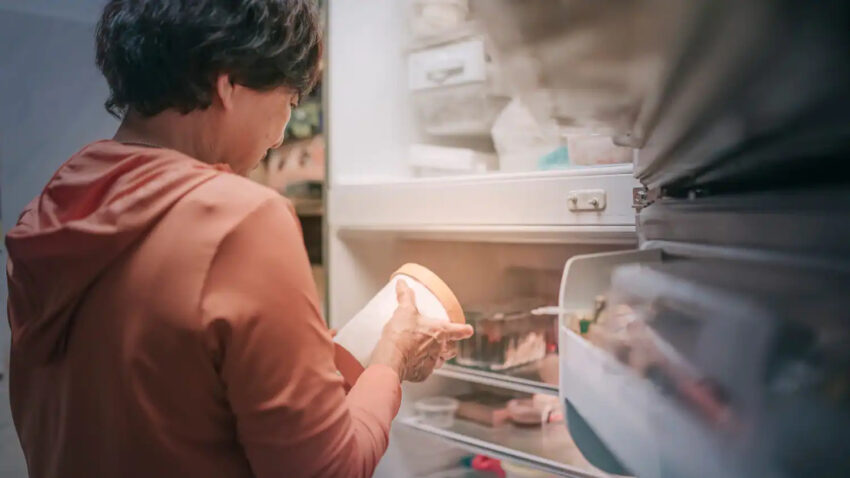Is your fridge turning your fresh produce into ice cubes? It can be frustrating to open your refrigerator only to find your favorite fruits and vegetables have transformed into frosty versions of themselves. But why does this happen? In this article, we will delve into why my fridge froze my food and provide practical solutions to prevent food freezing in your fridge.
A refrigerator is a modern-day convenience that helps us preserve and store perishable foods. However, when it starts freezing the items meant to be chilled, it can lead to a myriad of problems. If you experience a situation where the fridge compressor starts then stops repeatedly, it can disrupt the refrigeration process. To understand why your fridge may be turning into an unintentional freezer, let’s first explore the basic refrigeration process.
Understanding the Refrigeration Process

At the heart of every refrigerator is a refrigeration system that comprises a compressor, condenser, expansion valve, and evaporator. This system works together to remove heat from the fridge’s interior, creating a cool environment to keep your food fresh.
The compressor pressurizes the refrigerant gas, raising its temperature. The heated gas then flows into the condenser coils at the back or bottom of the fridge, dissipating the heat and condensing it into a liquid. The liquid refrigerant then passes through the expansion valve, causing a pressure drop and turning it into a cold, low-pressure mixture. This mixture flows into the evaporator coils, which are located inside the fridge compartment. As the refrigerant evaporates, it absorbs heat from the food and the air inside the fridge, cooling down the surroundings.
Why Does My Fridge Freeze My Food?
Improper Temperature Settings
One of the most common causes of food freezing in the fridge is incorrect temperature settings. The ideal refrigerator temperature range is between 35°F (1.7°C) and 38°F (3.3°C). If the temperature dial is set too low or if the thermostat is not functioning correctly, the fridge may dip below the recommended range, causing items to freeze.
Damaged or Faulty Thermostat
The thermostat is responsible for regulating the fridge’s temperature. If it becomes damaged or malfunctions, it may fail to control the cooling process accurately. This can result in the fridge being colder than desired, leading to food freezing.
Poor Air Circulation
Inadequate air circulation within the fridge can disrupt the temperature distribution, leading to localized cold spots where food can freeze. This can happen when items block the vents or the refrigerator’s fan is not functioning correctly.
Blocked or Malfunctioning Defrost System
A fridge’s defrost system is designed to prevent ice build-up within the freezer compartment and evaporator coils. If this system is blocked or not working properly, ice can accumulate, causing excess cold air to flow into the fridge compartment and freeze the food.
Overloading the Fridge
Stuffing your fridge to the brim may seem like an efficient use of space, but it can impede proper airflow and temperature regulation. Overcrowding restricts cold air circulation, leading to uneven cooling and potential freezing of certain items.
Effects of Freezing on Food Quality
When your fridge turns into an icy cavern, it can harm the quality of your food.
Texture Changes
Freezing can cause a change in the texture of many food items. Fruits and vegetables may become mushy and lose their crispness, while meat and fish can suffer from freezer burn, resulting in a tough and dry consistency.
Nutritional Loss
Some nutrients, such as vitamin C and thiamin, are sensitive to freezing temperatures. Prolonged freezing can lead to a loss of nutritional value in your food, reducing its overall quality and health benefits.
Flavor Alterations
Food that has been improperly frozen can experience flavor changes. The taste and aroma of certain items, such as dairy products and delicate herbs, may be altered, affecting the overall enjoyment of your meals.
How to Prevent Food Freezing in the Fridge
Fortunately, you can take steps to prevent your fridge from turning your food into popsicles. Consider the following measures:
Adjusting Temperature Settings
Ensure that your fridge’s temperature is set within the recommended range of 35°F (1.7°C) to 38°F (3.3°C). Use a reliable refrigerator thermometer to gauge the temperature and make necessary adjustments accurately.
Checking and Replacing the Thermostat
If you suspect a faulty thermostat, it’s crucial to have it inspected by a professional technician. They can determine if it needs calibration or replacement to restore proper temperature regulation.
Ensuring Proper Air Circulation
Arrange your food items to allow for proper airflow within the fridge. Avoid blocking the vents and ensure enough space between things for the cold air to circulate freely.
Maintaining the Defrost System
Regularly check and clean the fridge’s defrost system, including the drain tube and evaporator coils. If you notice any ice build-up or blockages, defrost the freezer compartment and clear the obstructions to maintain optimal performance.
Organizing the Fridge Properly
Avoid overloading your fridge and allow for proper air circulation. Group similar items together, placing the most temperature-sensitive ones away from the back wall and bottom of the fridge, where the coldest spots usually are.
Conclusion
Suppose you’ve been wondering why your fridge has been freezing your food. In that case, it’s likely due to improper temperature settings, damaged thermostats, poor air circulation, malfunctioning defrost systems, or overloading. By understanding these causes and implementing preventive measures, you can keep your fridge at the right temperature and ensure your food stays fresh and unfrozen.
You may like to read Choosing Furniture for Corners of a Living Room




